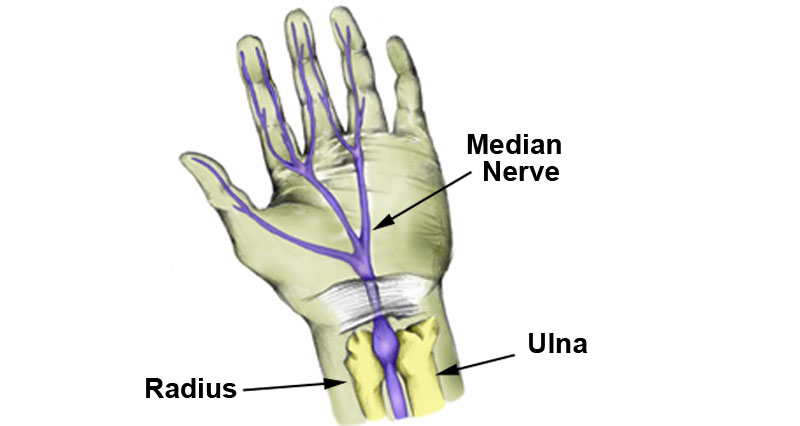The median nerve is the nerve that plays a crucial role in providing motor functions to the forearm, wrist, and hand. Additionally, it transmits sensations of touch, pain, and temperature from the lower arm and hand to the brain. When the median nerve is compressed or pinched, it can lead to carpal tunnel syndrome, resulting in wrist pain and difficulties with gripping and holding objects.
The nerve starts at the armpit, but its functions all take place in the forearm or hand.
Function
The median nerve stimulates muscles in the forearm, enabling a person to:
- Bend and straighten the wrists, thumbs and first three fingers.
- Rotate the forearm and hand to turn the palm downward.
The median nerve is also responsible for touch, pain and temperature sensations to the:
- Bottom (palm) side of the thumb, index and middle fingers, and part of the ring finger.
- Forearm.
- Thumb side of the palm.
- Top (nail bed) side of the index and middle fingers.
Anatomy
The median nerve is one of five nerve branches of the brachial plexus. This complex network of nerves vital for the shoulders, arms and hands. It also sends sensory transmission. The brachial plexus begins as nerve roots from the cervical spine in the neck. The nerves travel behind the collarbone (clavicle) through the armpit (axilla).

There is a left and right median nerve — one for each side of the body. This nerve starts at the armpit and:
- Connects to nerve roots in the brachial plexus that run from the C5 to C8 cervical vertebrae and the T1 thoracic vertebra.
- Runs along the inside of the upper arm between the bicep and triceps tendons, next to the brachial artery.
- Crosses in front of the brachial artery and goes under the bicipital aponeurosis, a broad band of connective tissue in the cubital fossa (triangular space opposite the elbow joint).
- Travels with the ulnar nerve down the forearm, where it branches into smaller nerves.
- Enters the hand through the carpal tunnel, a space in the wrist that holds the median nerve and tendons.
Median nerve branches
Muscular branch: Controls movement in the forearm’s superficial muscles, close to the skin.
Deep (volar interosseous) branch: Controls deeper muscles in the front part of the forearm.
Palmar branch: Sends sensory information to and from the palm, thumb and some of the fingers.